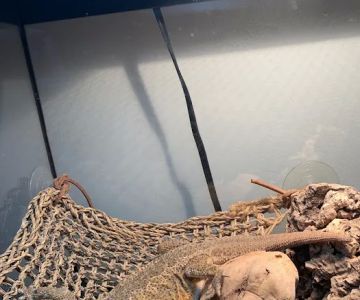How to Set Up a Non-Rebreather for Veterinary Care: A Comprehensive Guide
In veterinary medicine, providing adequate oxygenation to animals experiencing respiratory distress is critical. One of the most effective ways to achieve this is by using a non-rebreather mask (NRB), which ensures that the animal receives a high concentration of oxygen. This guide will walk you through the steps of setting up a non-rebreather mask for a veterinary patient, highlighting its importance, practical considerations, and common mistakes to avoid.
1. Understanding the Role of a Non-Rebreather Mask in Veterinary Care
Non-rebreather masks are designed to deliver high-flow oxygen to animals that are in respiratory distress. Unlike rebreathing masks, NRBs are equipped with a one-way valve that prevents exhaled air from returning to the animal. This setup ensures the animal breathes in fresh, pure oxygen, which is essential for patients suffering from conditions such as pneumonia, asthma, or shock.
In veterinary care, the proper use of an NRB can significantly improve the prognosis of an animal by ensuring sufficient oxygen is supplied to vital organs. Whether you're working with a dog, cat, or exotic species, knowing how to correctly set up and monitor the non-rebreather mask is essential for effective treatment.
2. Necessary Equipment for Setting Up a Non-Rebreather Mask
Before you begin, ensure you have all the necessary tools. Here's a list of equipment required for setting up an NRB:
- Non-rebreather mask: These masks come in various sizes to fit different animal species. Choose one that fits comfortably over the animal’s nose and mouth.
- Oxygen source: This could be an oxygen tank or an oxygen concentrator, depending on your setup.
- Oxygen tubing: Connect the mask to the oxygen source using tubing that can withstand the pressure and flow of oxygen.
- Flowmeter: A flowmeter is essential for regulating the amount of oxygen being delivered. It's important to set the correct flow rate, typically between 10-15 liters per minute, depending on the animal’s size and condition.
- Monitoring equipment: A pulse oximeter or capnograph can help you monitor the oxygen saturation levels in the animal’s blood, ensuring that the treatment is effective.
Having all the necessary equipment on hand will make the process smoother and help ensure the animal’s safety and comfort during oxygen therapy.
3. Setting Up the Non-Rebreather Mask
Now that you have your equipment ready, it's time to set up the non-rebreather mask. Follow these steps for a smooth setup:
- Step 1: Attach the oxygen tubing to the oxygen source: Connect one end of the oxygen tubing to your oxygen source, whether it’s an oxygen tank or concentrator. Ensure the tubing is secure and there are no kinks that could block the oxygen flow.
- Step 2: Adjust the flowmeter: Set the flowmeter to the recommended flow rate for your patient. Typically, for small animals like cats and dogs, this will be between 10 and 15 liters per minute. Be sure to adjust it as needed depending on the animal's size and condition.
- Step 3: Fit the mask on the animal: Gently place the non-rebreather mask over the animal’s nose and mouth. The mask should fit snugly, but without causing discomfort. Some animals may resist, so be patient and use calming techniques as needed.
- Step 4: Monitor the animal's condition: Keep a close eye on the animal's respiratory rate and oxygen saturation. Use a pulse oximeter to ensure that the oxygen levels are adequate. You should aim for an oxygen saturation of 94% or higher.
Once the mask is in place and the oxygen flow is properly adjusted, monitor the animal to ensure they are receiving the appropriate amount of oxygen. It's essential to make sure the mask stays secure and that the animal is breathing comfortably.
4. Common Mistakes to Avoid When Setting Up a Non-Rebreather Mask
While setting up a non-rebreather mask may seem straightforward, there are a few common mistakes that can affect the effectiveness of oxygen therapy:
- Incorrect mask size: Using a mask that is too large or too small can prevent the animal from receiving adequate oxygen. Ensure the mask is appropriately sized for the animal’s face.
- Improper oxygen flow rate: Setting the oxygen flow rate too low will prevent the animal from receiving enough oxygen. Conversely, too high of a flow rate can be uncomfortable and waste oxygen.
- Not monitoring oxygen levels: It's crucial to monitor the animal’s oxygen saturation levels throughout the process. Failure to do so may result in inadequate oxygenation.
- Ignoring animal comfort: An animal in distress may become anxious or resist the mask. Take care to ensure the animal remains calm to avoid further complications.
Avoiding these common mistakes can significantly improve the success rate of using non-rebreather masks in veterinary care.
5. When to Use a Non-Rebreather Mask in Veterinary Medicine
Non-rebreather masks are typically used in emergency situations where an animal is suffering from respiratory distress. This could include conditions such as:
- Pneumonia: Infections in the lungs can lead to difficulty breathing, making oxygen therapy essential.
- Asthma: Animals with asthma may require supplemental oxygen during an asthma attack.
- Shock: Shock, which may occur due to trauma, blood loss, or sepsis, can severely impact an animal's ability to breathe.
- Post-surgical recovery: After surgery, animals may need supplemental oxygen as they recover from anesthesia and sedation.
By using a non-rebreather mask in these cases, veterinarians can provide the necessary oxygen to help stabilize the animal and improve recovery outcomes.
6. Monitoring the Effectiveness of Oxygen Therapy
Once the non-rebreather mask is in place and oxygen therapy is underway, it is essential to monitor the animal's response. Keep track of the following:
- Breathing pattern: Observe the animal’s breathing to ensure it becomes less labored. Rapid or shallow breathing may indicate that the oxygen flow is insufficient.
- Oxygen saturation: Use a pulse oximeter to ensure the animal’s blood oxygen levels are within the normal range (94% or higher).
- Behavioral signs: Pay attention to any signs of distress or discomfort in the animal, such as restlessness or attempts to remove the mask.
By closely monitoring the animal, you can make any necessary adjustments to the oxygen flow or mask placement to ensure optimal treatment.
OLD Keywords-31: SEO Title: How to Set Up a Non-Rebreather Mask for Veterinary Care: Step-by-Step Guide SEO Keywords: non-rebreather mask, veterinary oxygen therapy, setting up a non-rebreather mask, veterinary emergency care, oxygen for animals SEO Description: Learn how to set up a non-rebreather mask for animals in distress. This step-by-step guide covers the equipment, setup, and monitoring of oxygen therapy in veterinary care.










